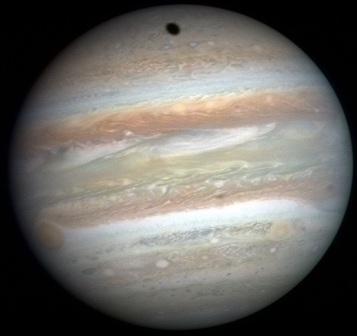- Series:Astronomy, Transcript English
I Corinthians 15:41
“There is one glory of the sun, and another glory of the moon, and another glory of the stars: for one star differeth from another star in glory.”
According to evolutionary naturalism, the solar system began as a disk of hot, rotating gas. The sun began to form first. At the same time, the planets began to form as they collected material out of the gaseous disk. This process generated more heat, with the largest planets collecting more of the heat than smaller planets. The amount of heat collected by the large, heavy planets like Jupiter compared with a planet like the Earth accounts for the different elemental composition of the planets.
 When scientists began studying Jupiter, they expected it to have certain lighter elements in the same proportion as the sun. Large planets like Jupiter would have been too hot at formation for lighter elements to condense. However, researchers using the Galileo space probe have discovered that Jupiter has more than twice as many gases as the sun. It has nearly three times as much krypton and xenon gas as the sun. Jupiter has over three-and-a-half times as much ammonia as was expected. Scientists are trying to figure out where these gases came from. However, evolutionary scientists admit that they cannot find a satisfactory naturalistic explanation for the chemical composition of Jupiter. They have even speculated that they might find the same problems with the other outer planets.
When scientists began studying Jupiter, they expected it to have certain lighter elements in the same proportion as the sun. Large planets like Jupiter would have been too hot at formation for lighter elements to condense. However, researchers using the Galileo space probe have discovered that Jupiter has more than twice as many gases as the sun. It has nearly three times as much krypton and xenon gas as the sun. Jupiter has over three-and-a-half times as much ammonia as was expected. Scientists are trying to figure out where these gases came from. However, evolutionary scientists admit that they cannot find a satisfactory naturalistic explanation for the chemical composition of Jupiter. They have even speculated that they might find the same problems with the other outer planets.
That the planets differ in composition is exactly as stated in the Bible for the stars: “…for one star differeth from another star in glory” (1 Corinthians 15:41). That these differences don’t fit evolutionary theory further witnesses to God’s glory as Creator.
Prayer:
Dear Father, help me glorify You along with the heavens. Amen.
Notes:
Nature, 11/18/99, pp. 269-270, “A low temperature origin for the planetessimals that formed Jupiter.” Photo: Jupiter as seen by the New Horizons spacecraft in 1997. (PD)
